Gleiberg / Vetzberg
These photos of Gleiberg and Vetzberg were taken in 1979. In the photo at right Vetzberg is on the left with Gleiberg in the distance on the right.
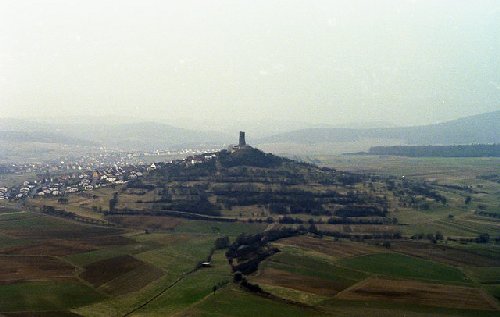
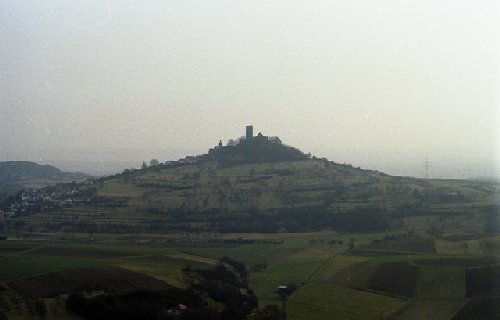
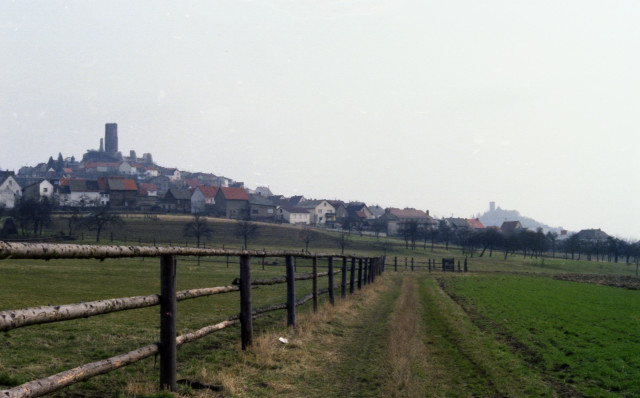
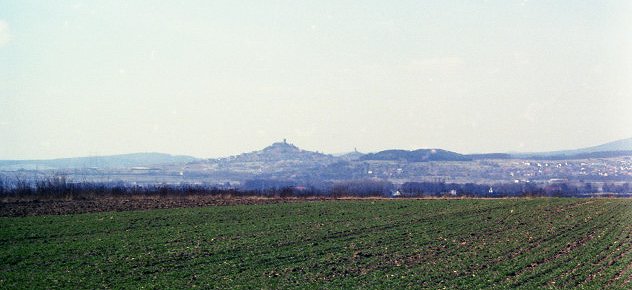
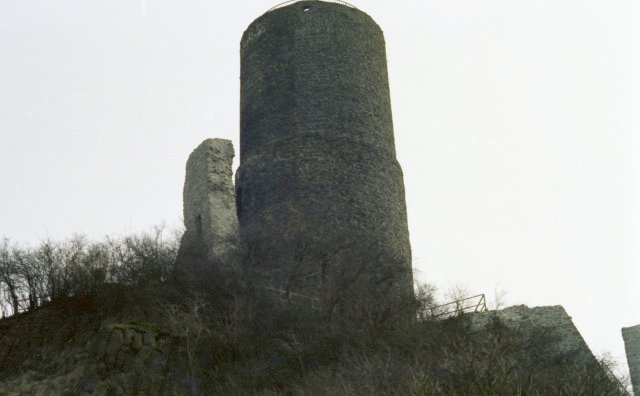
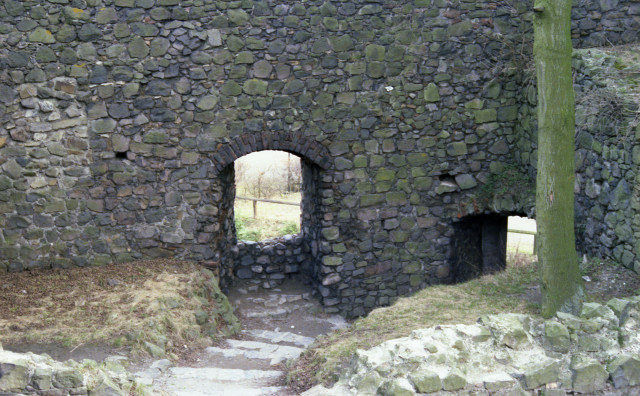
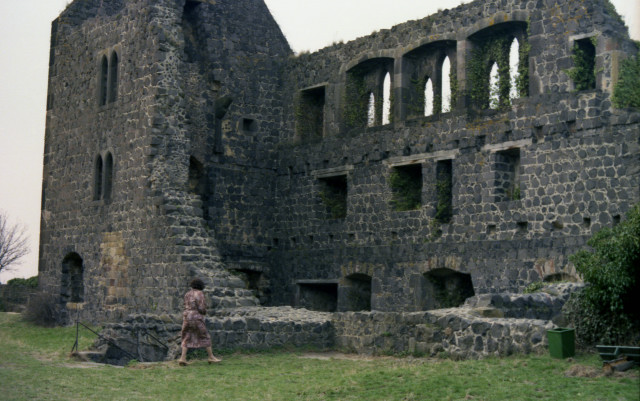
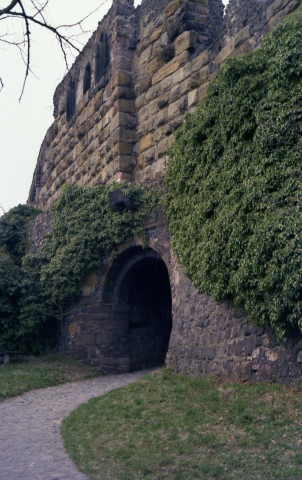
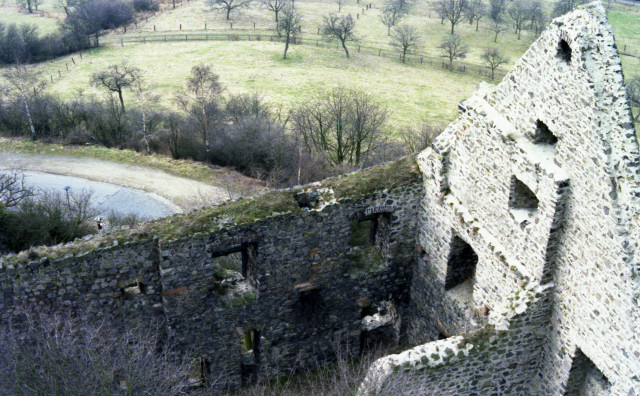
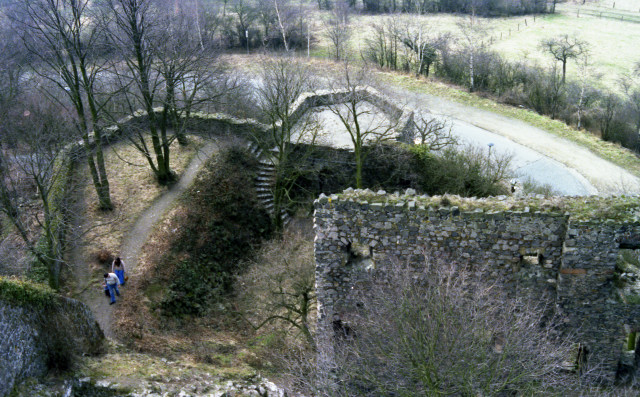
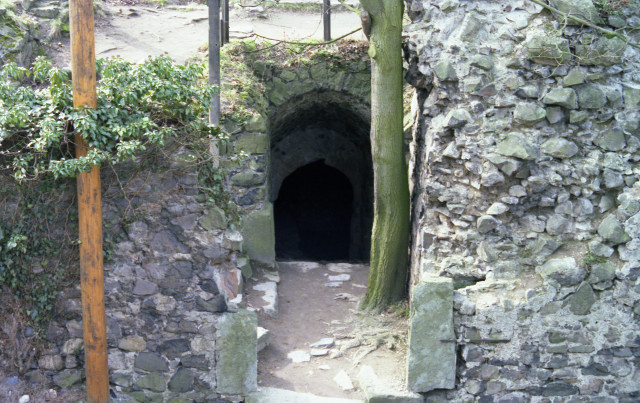
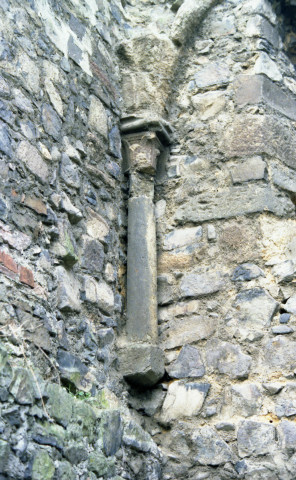
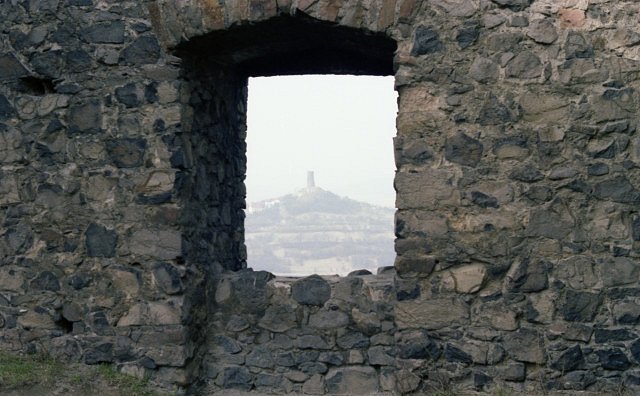
Gleiberg's history goes back to the 900s when the castle was used by Emperor Conrad against his rivals. It was captured and destroyed in 1103 by Henry V of the Salian dynasty. Once the Salians consolidated control they had the castle rebuilt. The Lords of Merenberg later obtained control of the fortress, but by the 14th century it passed to the House of Nassau. In 1646, the Landgrave of Hesse destroyed the castle during the Thirty Years War. The castle remained a ruin from then on.
Vetzberg was built on a volcanic mound and was first mentioned in documents in 1150, then known by the name of Vogtisberg. The castle was once owned by the same family that held the Gleiberg, but passed to the Dembach family in the early 1200s. This family expanded the castle, but during the 13-1400s the castle was held by a group of lords bent on local robbery. The castle was besieged and destroyed several times during the 1400s and by 1495 the site was considered of little military value and was abandoned. Those holding the property eventually disposed of it by selling it to the House of Nassau in 1765, and from then on the remains fell into decay.
Right, the keep of Vetzberg. Note the wall to the left of the keep, a unique feature that only a few castles have. This wall helped to protect the base of the keep from attack.
Gleiberg has more extant ruins than Vetzberg. To the left, a view of part of the structure. At this time the walls showed only marginal efforts to keep them from further decay. I'm sure that today more work has been done on them.
Right, an excellent view of Gleiberg from Vetzberg. The main living area is visible to the right of the keep.
Right, the principle residential area of Gleiberg. Note the holes in the wall that were used for the wooden floor joists. The windows at the top level could be indicative of the location of a small chapel.
Below, the entrance into Gleiberg.
Below, another poriton of the living quarters of Gleiberg. Further below, the entrance to a lower chamber. Many castle builders over time dug into the hill on which the castle rested, digging out storage areas and further living quarters.
Right, a piece of authentic column that once supported an arched ceiling. Gothic construction is distinctive in that heavy arches were used for support.
Below, Vetzberg in the distance as seen from one of the extant windows of Gleiberg.